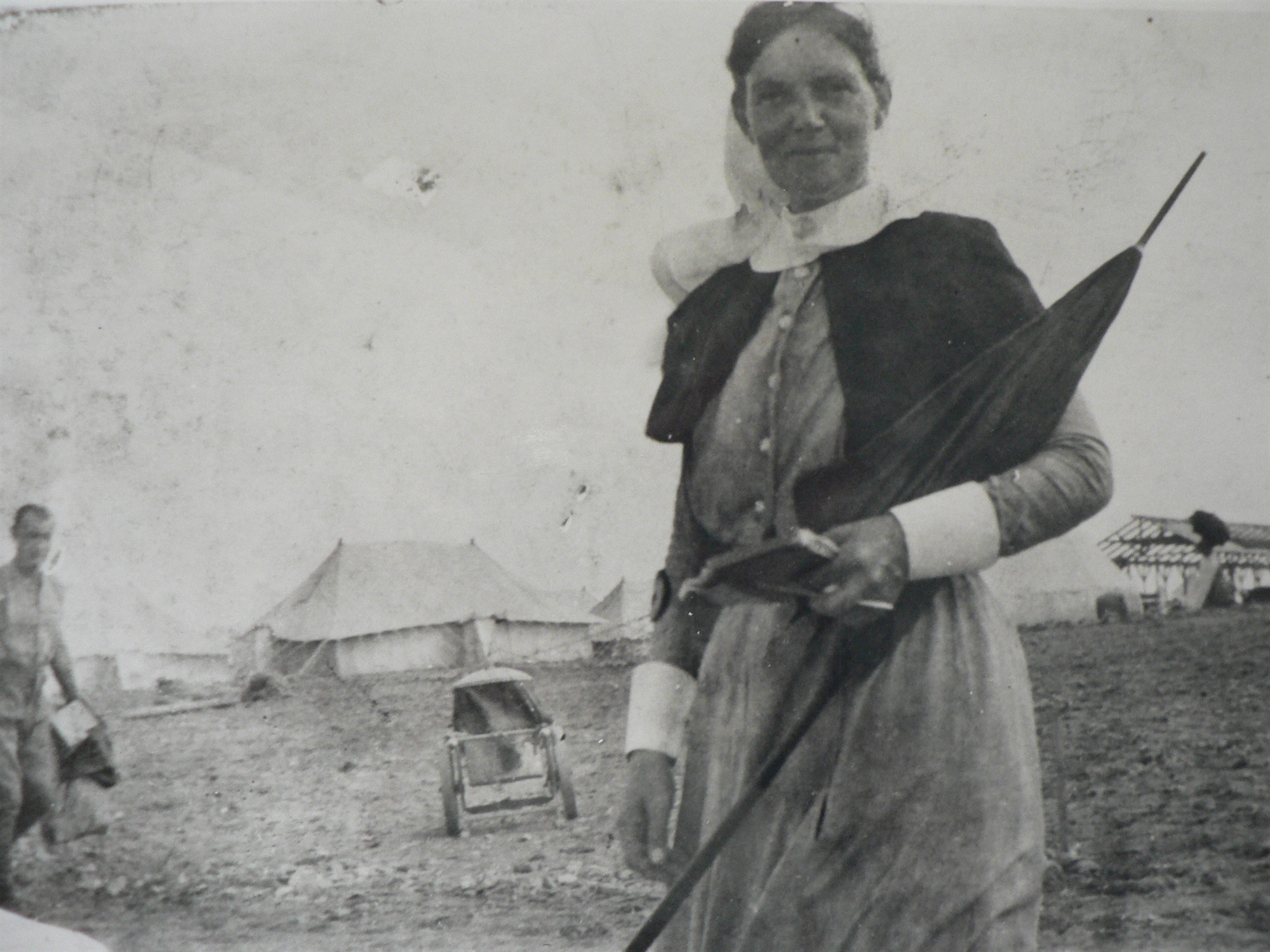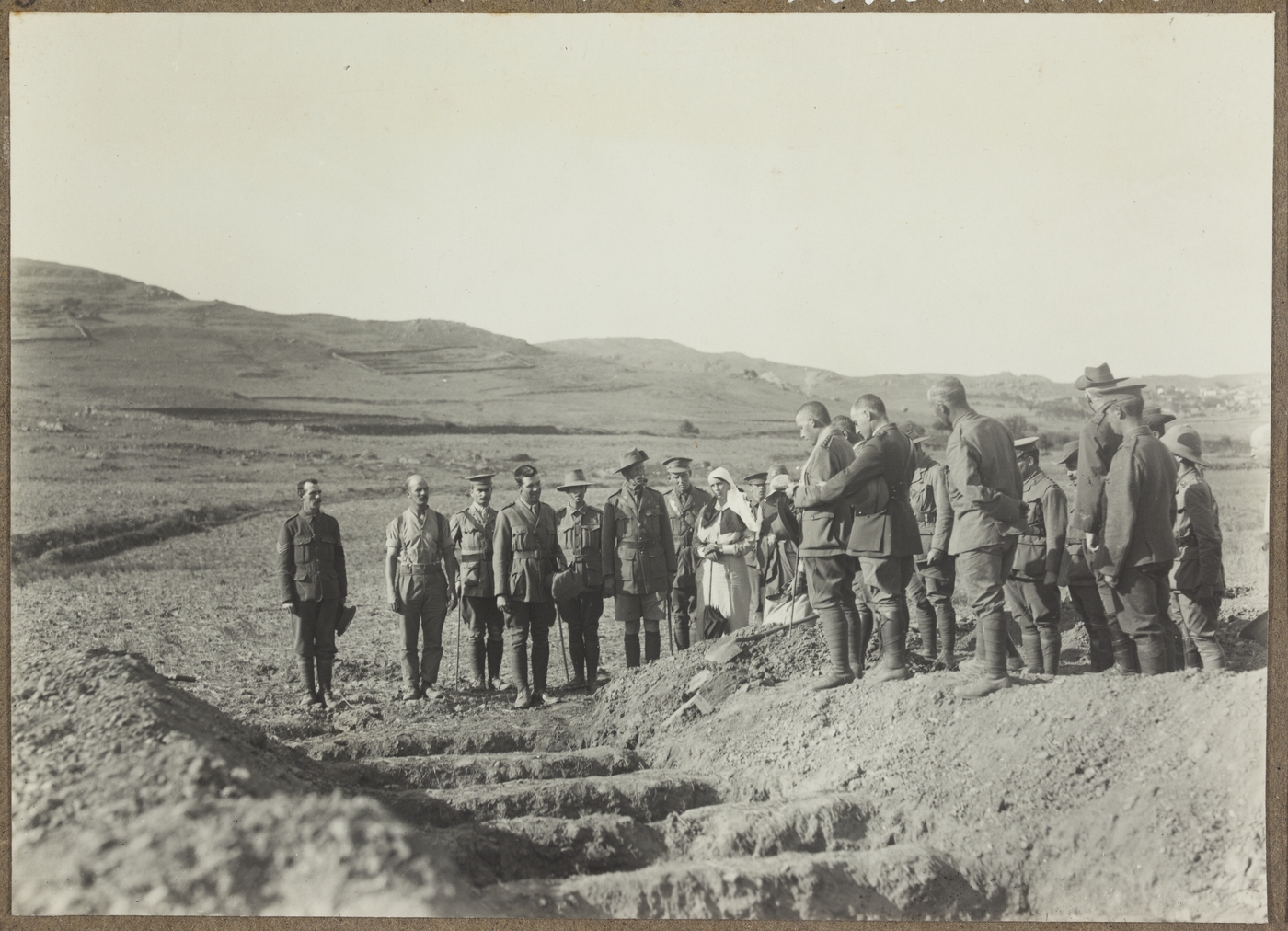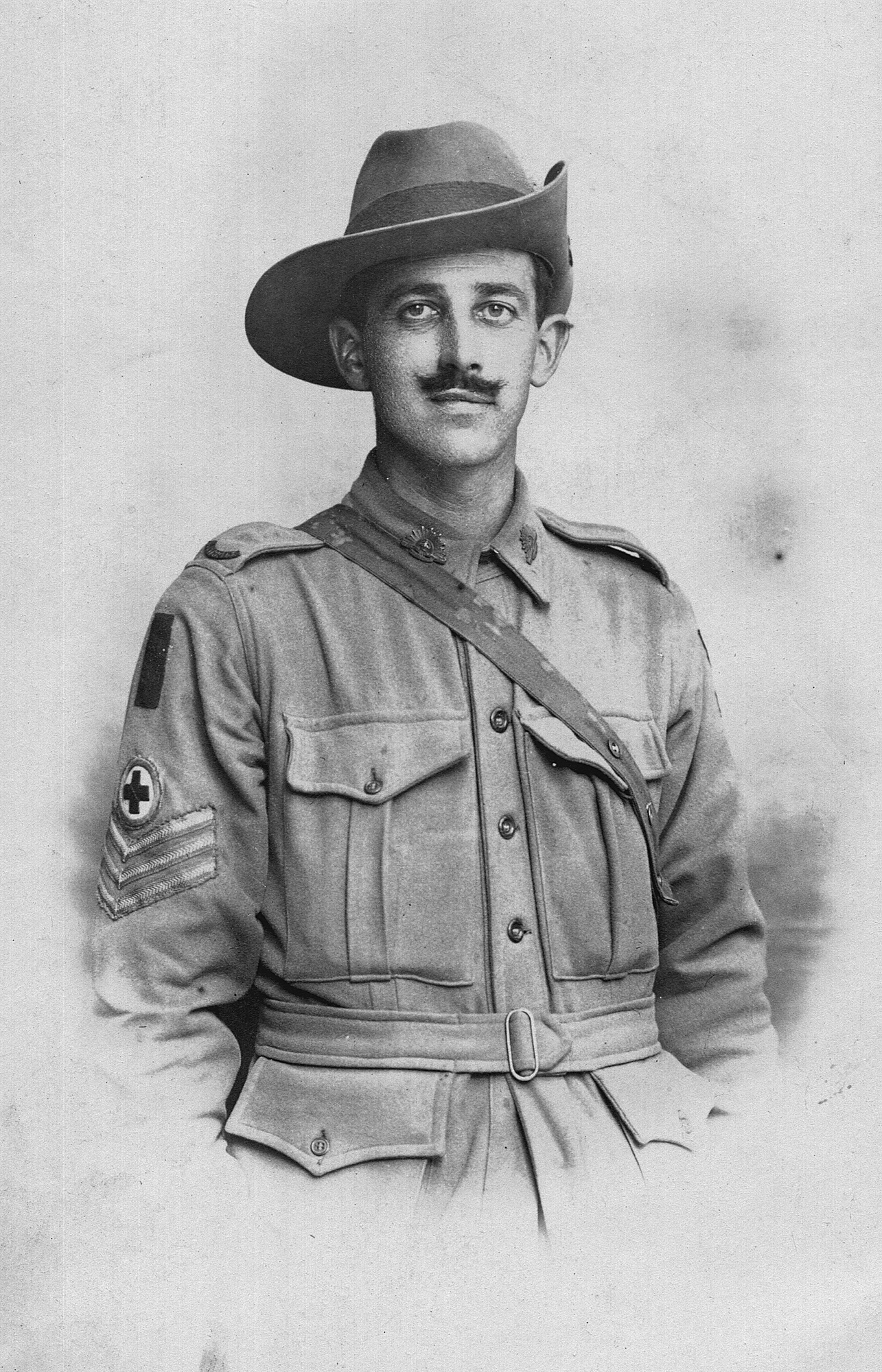
They threw off their military uniforms and went swimming naked. They ate feta cheese and olives for the first time in their lives. Yogurt and black bread. They first drank tsipouro, but did not know the name of this hot drink, so they called it cognac. They came from distant Australia to fight, and their base was this arid island in the Aegean, where on holidays the natives held hands and danced in circles. They were part of the New Zealand and Australian ANZAC forces that took part in the Gallipoli Campaign in 1915 along with French, Italian, British, Canadian and Indian troops. Lemnos was the place where they camped and healed.
More than a century later, their descendants return to the place where they fought, and some of these soldiers are buried. They come to Lemnos and look for Allied cemeteries and a World War I military hospital. They visit “Australian Landing” in Mudros with flowers.
“My great-grandfather was Ted Tozer, a stationmaster from a suburb of Melbourne who served as a soldier on Lemnos for seven months. He spent four days in the villages of Agariones, Kontias and Tsimandria,” Lee Tarlamis, Greek-Australian politician and president of the Lemnos-Gallipoli Memorial Committee, tells K. “The Tarlamis family, who lived in the aforementioned villages, left Lemnos in 1952 and emigrated to Australia; their son, Sam Tarlamis, met Ted Tozer’s niece in Melbourne — “Here I am,” says Tarlamis, who, because he’s equally connected in both places, chaired the committee that was set up in 2011. The goal was to raise mutual awareness among peoples – in this context, the Lemnos Gallipoli memorial was installed in Albert Park, as well as the Australian dock on Lemnos, while other projects such as the Australian Memorial Trail were launched.
The diaries of soldiers, nurses and doctors, kept for more than 100 years as family heirlooms, are “opened”, bringing to the surface revealing information about everyday life and the coexistence of peoples with different cultures. The arid landscape reminds many of their homeland.

Ring
They come and look for Allied graveyards and a World War I military hospital. They visit “Australian Landing” in Mudros with flowers.
Ernest Lawrence, then aged 29, bought a humble material ring from a local shop on Lemnos to “seal” his love for Clarice. “We grew up with their wedding photo hanging on the wall of our house,” their great-grandson Glenn Chapman recalls today. As a child, Glenn asked with sincere surprise, “Who are they? Where are they?” so that his family would tell him one of the most romantic love stories that developed during the 1st P.P. and reflects the customs of the time. Clarice, scion of a prominent Victorian family and daughter of one of the most prosperous real estate developers in the world, and Ernest, scion of convicts who made a living as an itinerant peddler, met and fell in love before the war; as expected Clarice’s father did not approve of the affair. “My great-grandmother joined the Australian Army Nursing Service and my great-grandfather joined ANZAC when they lost touch with each other,” says Glenn. “Ernest, already promoted to sergeant and trained in Egypt, went straight with his unit to Gallipoli and later arrived at Lemnos wounded.” There the two young people meet again. “Nurses were not allowed to marry while serving in the corps and the conditions were extremely unfavorable, but they dared.” A black-and-white photograph and a copper pot – a wedding gift – with the wedding date 10/21/1915 – family heirlooms that the family proudly keeps today. “My great-grandmother, like almost all women in our family, had a very strong character,” says Glenn, “she was never scared by her father, who did not approve of their marriage and cut off all contact with her until her death.” . Clarissa returns to Victoria, where she will wait for Ernest until the end of the war. He returns with severe post-traumatic stress disorder and is hospitalized for a while. “But they don’t give up, they open a store together, they have four children,” he adds. “It was a happy marriage, although the war never ceased to haunt Ernest, who eventually died at the age of 46.”


“Main Grace”
As a strong and independent woman who carried disproportionately large burdens on her back, her descendants remember Grace Wilson, the head of the hospital that the ANZACs set up on Lemnos. “She’s a mythical figure to us,” says excitedly her brother’s granddaughter Rosemary “K,” who, upon visiting Lemnos, found that her aunt’s fame transcended geographical and temporal boundaries. “Chief Grace” was a man who, under primitive conditions, managed to keep the death rate of soldiers at 2% and the morale of nurses and medical personnel at a high level. “In the diary which she kept systematically, my aunt tells of the conditions she found in August 1914 when she arrived there, how she was asked to set up a hospital on the ground, without water, nor about the possibility of sterilization.” Aunt Grace had trained as a nurse in her homeland and as a midwife in London—it was hard to get used to Lemnos.
She herself, after her mission to Lemnos and the loss of her brother at Gallipoli (s.s. he is buried there), continues to provide her services in other parts of Europe during the First World War. “And later, when World War II breaks out, he will end up in a military hospital in the Middle East.”
“For my great-grandmother, Lemnos was ‘the time of her life’,” says the daughter and granddaughter of nurse Evelyn Hutt, who joined the ANZAC hospital at the age of 26, with feeling. “He never stopped talking about Lemnos, although he served in other places abroad,” note two women, Judith and Deb. “The first time I was in Lemnos as a student, I asked where the hospital was, but everyone looked at me questioningly,” Deb describes. “I still remember walking all the way from the port to Mudros.” He last paid his respects in 2018, along with other members of the Lemnos-Gallipoli Memorial Committee in Melbourne. Sister Evelyn’s personal collection, recently donated by her family to the State Library of Victoria, includes, among other things, 75 photographs from Lemnos.

How an unknown story surfaced
“I was surprised when, in 2011, I learned the details about the stay of the ANZACs on Lemnos,” Jim Klaven, historian and secretary of the Lemnos-Gallipoli Memorial Committee, tells K. “I studied European history, but it was information that I did not know about until my old age.” The Gallipoli campaign is now the chapter taught in Australian schools, however the Greek island is not mentioned; only some “initiates” can understand why some roads were renamed “Lemnos” and “Mudros”.
Klaven developed into a historian who conducted in-depth historical research, the fruit of which was the book Lemnos and Gallipoli Revealed, and an adviser to the Australian government. “After more than 100 years, we can see Gallipoli with different eyes,” he notes, “we can be more honest.” Along with the official historical narrative, there are many unpleasant truths.
“Many soldiers then went into the army for financial reasons, Australia was in a protracted economic downturn and for many the military pay was a valuable asset,” says Mr Klaven. “Many Indigenous Australians were also sent to war, although the law forbade it,” he adds. On Lemnos, where, in addition to the Australians, thousands of foreign soldiers were stationed for seven months, “money was flowing.” “From here and towards the end of their stay, a bank was also established on the island,” says the Australian historian. “The troops stimulated the local economy by often paying locals to do laundry or cook for them.”
Reviews
“I walked about 8 miles to the village, where I saw interesting scenes,” says young pharmacist Harry (Henry) Gissing in his personal diary. “We entered the school and the students gathered in the room for us to take pictures; they sang their national anthem to thank us, and we responded by singing to the accompaniment of the harmonica. Then we tried to take a picture of the girls washing in the well. […] we rarely see single girls on the island.” The most extensive answer to Lemnos comes from the ten diaries of Harry Gissing, covering the period 1914-1919, donated by his descendants to the State Library of New South Wales. “My grandfather was proud of what the ANZACs had achieved, but often thought about the meaning of the war,” his grandson Peter tells K. “His contacts with local residents were limited, at one point he describes how he traded cigarettes for a melon,” the report says. “Language was a significant barrier.”
Source: Kathimerini
Ashley Bailey is a talented author and journalist known for her writing on trending topics. Currently working at 247 news reel, she brings readers fresh perspectives on current issues. With her well-researched and thought-provoking articles, she captures the zeitgeist and stays ahead of the latest trends. Ashley’s writing is a must-read for anyone interested in staying up-to-date with the latest developments.